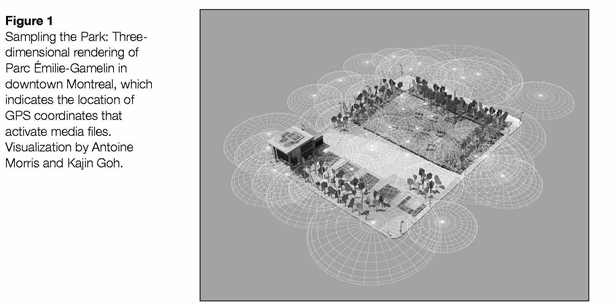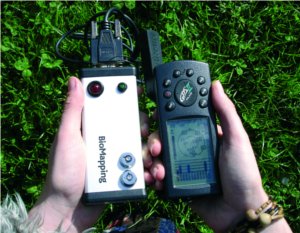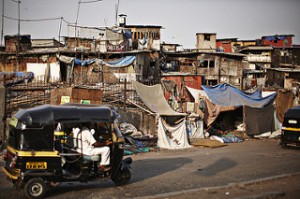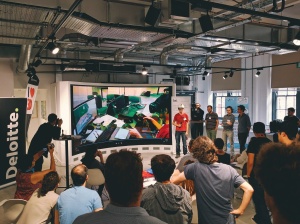What type of city do you live in? What is the Hallmark of smart cities!
Digital media and the global cultural divide. The global digital culture and the global digital perspective from South Asia.
Updated May 24,2016
Digital media and the global cultural divide. The global digital culture and the global digital perspective from South Asia.
Updated May 24,2016
Smart cities are focusing on an intersection of biotechnologies, art, and science. Artists are using digitization tools to enhance their perceptions of the environment. For example, sensors, bio-mapping devices, tagging, and Geo locations are woven together in London’s landscape. This article scrutinizes how all these technologies are shaping people’s lives in smart cities? There are detailed examples and visuals to reveal the logistics and the technical choices artists and the public are making. And towards the latter end, the author brings in the example of Mumbai to understand how developing countries are adapting to western choice of Smart cities.
Introduction :
Author’s comment: City life is changing. On the one hand, personal and social memories are both temporary and are affected by emerging new structures, such as fiber networks that transform data flows into digitized numerical data. Citizens have access to real-time technologies, and technology is evolving faster than our cultural experiences. This piece encapsulates how the speed of technology is interlinked with satellite communication networks, producing different kinds of expressions for the people in the city. London is an excellent example, offering a euphoric vision of the future city.
In the preceding section Saskia Sassen is a leading researcher on intelligent cities and technology, and in this video, she tells us that :
“It is the need to design a system that puts all that technology truly at the service of the inhabitants—and not the other way around.”
Place Emilie Gamelin, Canada
In the following paragraph, Montreal’s geo coordinates give the reader a sense of society’s environment. This black and white image shows how radar technology is surrounding and affecting the architectural landscape and the humans.
Image: Senses & Society, June2007, Vol. 2 Issue 2, p189-200, 12p, 4 Black and White Photographs, 1 Diagram; found on p190 Accessed May 06, 2016.
Park Emelie Gamelin is a public place in Montreal. It is frequently visited by homeless people and activists and is also a tourist destination. Sensors were embedded to collect data during WW2 in the military. But the photo above shows the location of Geo coordinates in Montreal today. These robust sensors detect the minutest environmental changes in humidity, noise, pollution, traffic, and much more. The sensors rely on wireless networks and transmit and communicate essential data through self-configuring networks. As communication is among machines, it has far-reaching consequences beyond the internet and satellites. This way, the historic Montreal’s Park Emilie Gamelin manages its urban environment, but Montreal is not alone. Other western cities are using similar technologies as well. Smart cities, cleanliness of this location, good music festival with lots of lights near the metro station, facilitate games like table tennis, chess, checkers, and foosball. If you do not have a partner to play TT, then the employees there willingly give you company. This park also conducts community salsa classes on the weekends, and everybody has a good time together. s.The park is beautifully lit in the evenings. It is a fantastic place to chill in the evenings. Had friendly vibes as well as food n drinks stalls.
Google Map
https://goo.gl/maps/M9KqZoPYHt1dKcPi9
Locomotive Media
The following section explains why the landscape of digital cities is changing rapidly. As we have seen above how information systems and instantaneous communications are increasing. Humankind is reduced to a minuscule by the complex technological systems surrounding the city’s landscapes. The latter section explains how human beings are driving the change because of locomotive media and ubiquitous Art in our environments. Initially, Latvian Electronic Art and Media Center and Riga coined the word locomotive media to deorcorpolarize the experience of screen-based Art and take it beyond the art galleries and laptops. Several artists are now crossing boundaries, thereby altering time and space in the external environment and internal systems. The systemic and cybernetic ideas delineate the shape and form of conceptual artworks to superscientific cultures. As tools are advancing, so is civilization. This section examines how artists prepare new codes and analyze data through metaprograms. The following two paragraphs outline how Art in the future is evolving. And it is for the reader to absorb how the fundamental shift is transforming the city and the architectural structures. And how the aesthetic relationships between ourselves on the one hand and the computing technology on the other is using us?
Ubiquitous Art
For the artists of the 21st century -Art is omnipresent. Traditionally, art in the galleries was considered distinct from our real surroundings. However, It is not about escaping from the real world into a digital space. On the contrary, these artists move through thoroughly structured environments connected with gadgets. This is a pervasive concept because the virtual world coincides with the real world. We are connected to sensors and digital technologies, and our actions have become immersed in our surroundings, which are thoroughly structured by microprocessors. Umbiquious technology allows us to link to other parts of the world through many communication spectrums and simultaneously with other people’s emotions and thoughts. Digital technologies are bringing about sociotechnical changes in the environment, and it is changing the way we perceive because there are no spectators as every human being is involved. Whereas historians used to create unprocessed art data in galleries and museums. However, real-time activities have replaced or removed the art experiences that were idealized from the flow of time. The problem is traditional art like Renaissance or Van Gough, where the artist was perceived as nostalgic; today, information art is delivered with no hardware value but with software significance. And it is affecting the awareness of events that are in the present. It can be hoped for the future that the complete absorption of art into media will be a fundamental shift because art is authentic. Therefore, separating the unreal from cybernetic analogists and artists is necessary. The artists will have to become aggressive in directing the artificial intelligence of machines. Otherwise, they may risk and get used to the technology and devices themselves.

Photograph : ciitheubiquitousart.tumblr.com poster 16/08/2012 source coca cola
Comparabilities
Those artists want to move into public spaces of the streets and place themselves to perform within the happenings of that particular time. In addition, we find that locative models and art designs have significantly increased in public spaces because of ubiquitous computing. Besides, Locomotive artists network with other artists and connect to the audiences for a terrific experience beyond our perception. The reactions of emotional outbursts occur when the artist experiences the art and the adrenaline because it basically ties up the communication space and the geographical space as one space. Since the public and digital spaces are both figments of our imagination, these artists experiment with technological gadgets such as Geo locations and bio-mapping. These artists are futuristic by crossing the line of traditional art in the galleries and capturing the spaces in the cities and thereby emancipating social changes. While the city spaces are being negotiated by politicians, social activism and, at the same time, the artists are engaging with audiences through social relations. Even though art could take many directions in the future, the aesthetic relationship between the audience and computers and psychological makeup and psychic truths will reveal human behavior and how humans respond or become mechanical!
Source: EskimoInferno’s channel
Ambient commons
Our environment is surrounded by data surveillance and the rise of electronic tagging. Ambient is the surrounding area of our environment, whereas ubiquity tends to imply connections to one similar internet with endless networking. On the other hand, the ambient is unobtrusive without links to other places, so the shared public qualities in an ambient environment differ from other forms of ubiquity. For example, environmental policy and intellectual property law are both standards. Ambient commons become a cultural domain in itself, and as pooled resources are suffering depletion in ideological terms. Tagging is ambient cultural awareness where the artist performs crime or social good. Hence, the ambient is surrounded by media information. It is inescapable that engulfs urban cities with communication sensors, displays, and memory chips. The Ambient Common is our surroundings we are oblivious to; it is a cognitive reaction to noise, pollution, and nuisance. Ubiquity is not just limited to the net but is embedded in information appliances, art installations, and the complexity of the relation of these media to other non-digital press on the same sites. The new technologies are bringing about social change and the crystallization of culture in actual time. Similarly, artists are consumed by lifestyle-cultural change as they use computers instead of paint, canvas, and wielded steel to produce exotic art styles.
Exploring different contemporary technologies leads one to believe that a new era is ushering in. It may be daunting to some! But, the technology is operating at a speed beyond human control or perception. The following three paragraphs examine bio mapping, bikers, tagging, and radio frequency identification.
Technological mapping of smart cities
BIO MAPPING
What is Bio mapping technology? Artist Christian Nold said, “In structured workshops, participants re-explore their local area with the use of a unique device invented by Christian Nold which records the wearer’s Galvanic Skin Response (GSR), which is a simple indicator of emotional arousal in conjunction with their geographical location. On their return, a map is created which visualizes points of high and low arousal.”
An example of bio mapping technology :
Photograph credit : Artist Christian Nold Photo subject to strict copyright laws
As the boundaries between public and private spaces are becoming blurred, cities around the globe are now being compartmentalized in regimental zones because of indiscernible rules in city public spaces. As the public areas become private spaces, the observation of cities and surveillance is concealed. Guardian. The following four concepts are explained by a Youtube presentation. To understand what makes the city so appealing, please press the link on Boris Bikes, The day of the figurines, and Blast Theory. Again, it is for the reader to decide whether the possibilities of technology are optimistic as time goes on or if is it generating pleasure and distraction.
Boris Bikes
BLAST Theory
Adventurous artist groups who use interactive media.
What is Tagging?
The rise of electronic tagging! This section highlights various examples of the relationship between the tagger and the ambient commons. It has created a new genre of artists that favors markups in the urban commons. Furthermore, ISBN numbers are used on library shelves and by book publishers. Tagging has become trendy as it is less risky than removing grime from the walls. The web allows the sharing of files on Flickr and YouTube. Taxonomy versus folksonomy. Today tagging is part of a larger cultural discourse for researchers. The question is the high-tech complexity the designers use which is spellbinding, and the social complexity of handheld devices such as mobile phones. This has shifted the agendas of social planners and environmental managers because civic participation in urban computing and ambient connectivity has risen.
Fox new : L A Taggers
” FOX News about taggers in Los Angeles around 93 or 94 think it came out. Enjoy.”
Yellow Art
In 2008 Yellow Art found its way into the New York Museum of Modern Art. In 2006 in the New York Times, Yellow Art was acknowledged for its geospatial web, which was overlaid by the internet on the physical environment to make cities more browse. It was so unique that an alphanumeric code was used through text messaging, which was connected to the Yellow Art servers. So much so in Copenhagen, it caught momentum during political campaigns in 2006. And in Boston, it served to advocate bicyclist rights. What do you think about yellow markings on the roads for the bike rights campaign?
Vodafone Germany :
Attribution: Happinno for The latest TV adverts for Vodafone.
Radio Frequency Identification (RFID)
This lucrative technology for supply change management in defense.

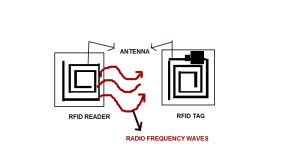
RFID Art gathered momentum between 2003 – 2006. It was used for transit passes and passports for personal identification checks. However, in recent years RFID is considered outdated because of data mining technology. And also because marketers, police and security networks felt that RFID data surveillance led to corrosive behavior from hackers. Yet, there is interest in RFID Mediamatic runs a RFID annual hackers camp from Amsterdam. Bruce Sterling is a futurist and a science fiction author who uses an ” arphid watch” on his column and tracks mischievous activities by implanting a VeriChip.
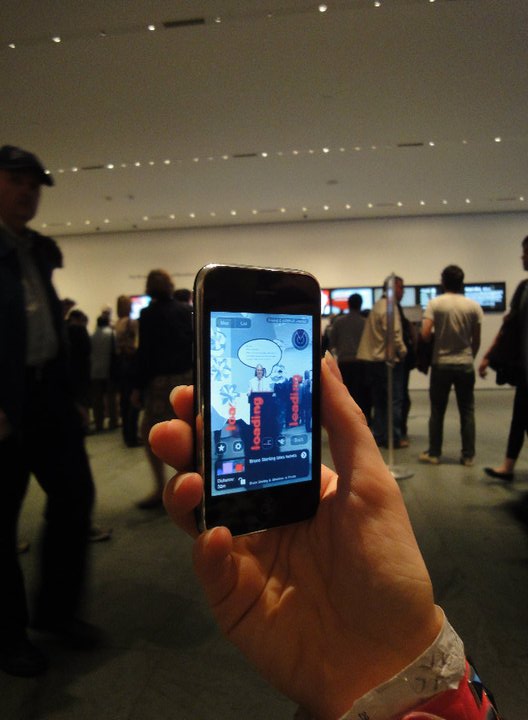
Another example of Tagging
An artist who visually presents art with his aerosol is known as a graffiti artist. But a tagger sprays his name or sign in spray paint. Tagging is used by respectable people on Twitter # hashtags. In urban computing there may be an involvement of stylistic motives for these artists .


Source: http://www.grafedia.net/#
What is Grafedia? It’s Art Jim, but not as we know it. “With Grafedia, I saw that the Web was going away from people’s laptops and computers and more toward being ubiquitous,” says Grafedia founder John Geraci, a graduate student in interactive telecommunications at New York University. “I wanted to do something that was an extreme version of that model, where you did away entirely with the idea of laptops and computers and sort of set the Web free to run through the streets.” The taken from the correspondent of The Christian Science Monitor July 7, 2005, by Elizabeth Armstrong Moore.
This is true that public spaces are facing a crisis today, and in London, for example, negotiations between political and social relations are apparent. The council offices (opinion) are acting like detention centers for citizens, and there is a clear demarcation that the council domain space is no longer egalitarian and is freely accessible to citizens. In recent years government buildings are becoming regimented and monitored zones, and the transformation of the cities is evident. The entire city’s shopping malls are blurring the lines of public spaces that are becoming private. The once-urban public spaces are not freely accessible to citizens because the technology in digital cities means constant observation and surveillance. The ubiquitous public spaces where cybernetic technologies work on their own rules have led to the demise of egalitarian urban spaces freely accessible to all citizens. Public spaces are a Utopian space is now a myth!
ARTIFICIAL INTELLIGENCE BY 2030
What do the Experts say? Their opinions on Artificial Intelligence and the future of humans.
The cost of losing your FREEWILL versus AI
India’s Mumbai
Author’s Note: Comment is free
INDIA’S Mumbai is the financial capital. Apart from the urban development policies of the BMC: Bombay Municipal Cooperation: the other problems are slums, traffic, and pollution. Koliwada areas are breeding grounds for unhygienic illnesses. Noise pollution is a huge problem. Water shortages and water rationing to the slummers do need to get more attention. The dual society of the rich has no social inclinations for the poor and prostitute women. I am using this space to reawaken the people of Mumbai to take a stance and clean up the city. Temples, mosques, gurdwara, and churches start their day at 5am by simply shouting slogans, and this rhetoric carries on till midnight. There is no courtesy for the children who have to sleep or study. My analysis is based on my three-month stay in Sion Koliwada. The following two photographs tell a story of their own! The city where I was born is not even fit for a slum dog.! I have been living in London for the last thirty years and am simply appalled by what I saw.
Urban planning is in deep contrast to the earlier concept of a Smart City.
With the support of the makers of Slumdog Millionaire, Plan International is working to improve the lives of 5,000 children in the slums of Mumbai. India’s growth rate has led to rapid urbanization, with thousands of families moving to cities to find work and a better quality of life. However, many end up living in over crowded slums, earning a daily wage that is insufficient for their families.
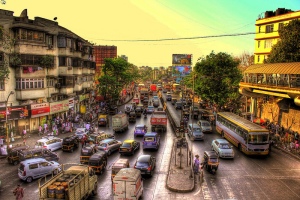
A private takeover of public spaces: Will India’s smart city experiment really help to tackle poverty? “In a recent speech, the Indian prime minister, Narendra Modi, said that the nation needed “to think big and focus on skill, scale, and speed to revive India’s growth story.” To this end, Modi has developed a new business model for urbanization: India’s ambitious national smart cities mission, which aims to transform a hundred small and medium–sized settlements into smart cities.”
Attribution: CityMetric, India, published February 5, 2016
Concluding remarks :
Updated June 9, 2016, from Stratford Library Univerity of East London & Birkbeck University of London
If cities could be sold to Englishmen for money in the future, would a mythic past into a modern existence remain a utopian concept? To relinquish this discourse to elites, a city must take prerequisites of the public’s religious, political, and visual literacy embedded with an emblematic language. Here the author wishes to acknowledge Morse for his belief in elitist republicanism that was threatened by burgeoning popularism and democracy. But more than anything, his inspiration drew from the meta-physical fall of the American government into the abyss of democracy in the Jacksonian era. Yet he remained optimistic, and the same ideology can be applied to developing countries to construct the argument on the rhetorical effort that represents the realities of that moment of historical significance to today’s millennial future.
In India, a collaboration between artists and architecture remains in the infancy stage. In Mumbai city and Delhi here, the communication between the artists and architecture is a general human activity rather than a reconciliation of focused aesthetic systems; in Delhi and Mumbai cities, communications research is lacking because human art and activities are compartmentalized. Still, in these cities, the conventional definition of art and architecture has limited efficacy to narrow, mutually exclusive areas (Gere, 2006, p. 114). Art and technology are part of general human activity, and collaboration becomes difficult because it is not seen as a mode of communication and expression. Two examples highlighting the concern are the Delhi street art festival and Roadshow: How 4 artists redesigned taxis with architecture-inspired art. The tag factory manufactures RFID tagging devices for westerners.
I have tried to review smart cities in a generalized way. There’s tangible evidence about smart cities’ growth models. In order to understand the next paragraph, I have laid down the context. The following paragraph focuses on terrestrial positions. The terrestrial positions on the earth map are represented as three-pointers. Each point is depicted as a city. So, imagine Mumbai, Delhi, and London..
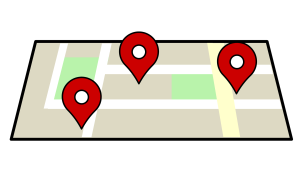
Has the earth’s relationship to the cosmos had anything to do with how cities are planned in the future? So, how will the cosmic design of future cities change? One has to consider the fourth dimension and beyond. This will depend upon the city’s culture, whether it falls into constitutional liberalism, dialectical materialism, or mystical idealism. The first two concepts are concerned with the political layout of the city, whereas the last is about engagement with religion and aesthetics (Gere, 2006, p. 76).
In western countries, technological advances have moved with greater freedom since the turn of the twentieth century. The thought of replacing the present universe with a supremacist satellite and extending it to the environment and supremacist architecture was championed by Malevich. The cities are working at different supremacism levels. For Malevich, the suprematist argument was not only a world in its own right but a creation of a new world? The laws of supremacism create a supremacist nature, and apparently, humanity has to adjust to the unique natural world (Gere, 2006, pp. 74-75).
The cosmic idea is explained by the pictorial representation of the new world of smart cities, which will form satellites around the Supremast city.
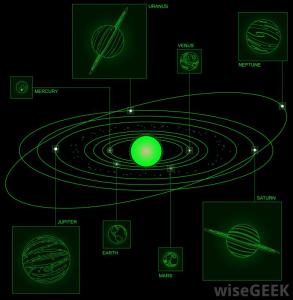
As supremacism grows; in new architectural constructions in time and space, the elaboration of new ideas for new architectural complexities and entities exists. The beauty of this argument is as the supremacist body is built to include natural organizations and the formation of new satellites through space and time, which will start moving in orbit, creating a distinctive path, and the position of the satellites just like the solar system the movement will be along straight lines, but in a circular motion of the intermediate satellite. If, for instance, London architecture and cities are the supremacist body, then Mumbai, Delhi, etc., will take their positions accordingly in the natural environment, whereas London is the supremacist because it denotes supremacy (Short, 2012, p. 61).
Gere, C. (2006). Art time and technology. New York: Berg publishers.
Short, C. (2012). The role of mathematical structure, natural form and pattern in the art theory of Wassily Kandanskiy: the quest for order and unity . In P. Crowther, I. Wünsche, P. Crowther, & I. Wünsche (Eds.), Meaning of abstract art between nature and theory. Routledge .
CHAPTER 2
Architecture Engineering and Construction
Review
July 10, 2016
I visited the Urban Innovation Centre in London. It is similar to a Fabrication Laboratory providing an innovative learning environment but with multi-purpose built spaces offering advanced digital-making facilities. It is no longer a 9 to 5 working hours concept. I was in the building for 12 hours with coders and developers who kept working even after I had left. These photographs show how software engineers and developers work in digital studios in London. At this event, I understood the difference between what the machines of digital media look like from the outside. However, the AEC Hackathon in London was crucial because I saw the actual process of how digital media works with the computational machines that make digital media possible. I also realized that the machines were the only part most users see directly or use: The software application is becoming a key component.
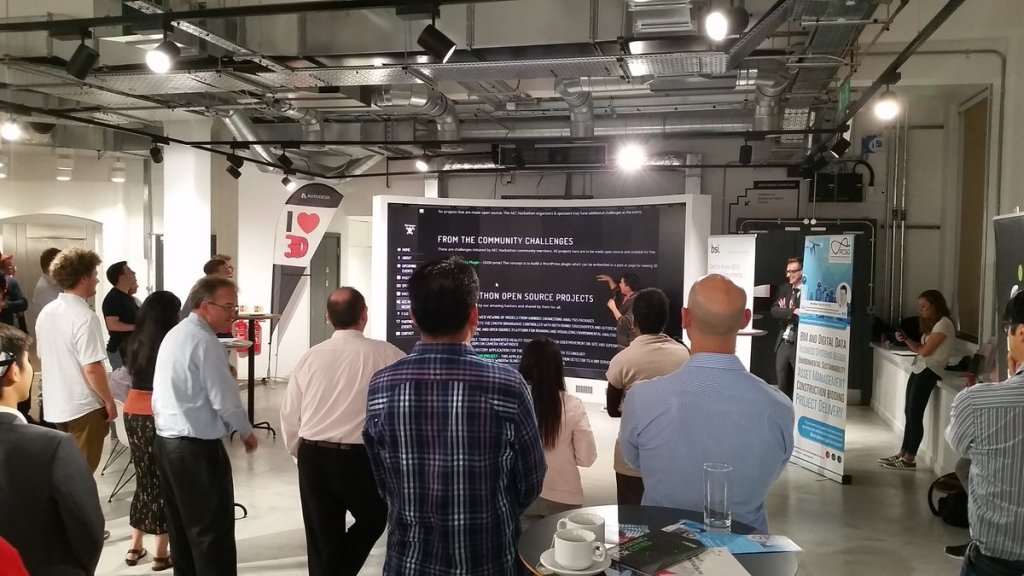

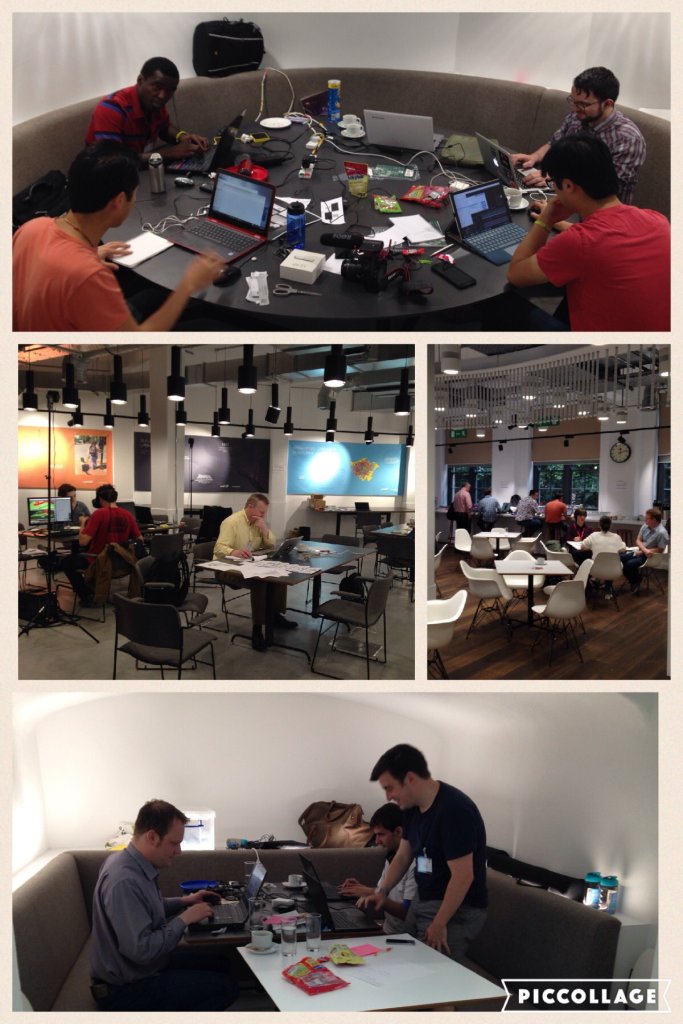

Initially, I did not question the building design because I needed clarification about the specifications. There were 17 sensors in the building spread across the basement, ground floor, and first floor. These sensors monitored the building’s air pollution, noise pollution, and humidity levels. As a digital culture practitioner, it became essential to understand the implications of sensors in buildings. For me, the most critical aspect was the use of the sensors, and the second problem was how to use the data collected by the Urban Innovation Centre from the sensors. A model was required to make the best use of data and information from the sensors in the building. The BIM 4D model enables the manipulation of data through time. Although many software technologies were developed by Autodesk, I sat with a coder, Derek Jones, and found out that by using the program R to code, he could accomplish this task and then make the information available on the web browser. However, the study was challenging because the information kept changing, so a printout of the data helped to analyze the pollution levels and danger areas. The coder was in constant conversation with the staff of the building. I developed my understanding of how traditional smart cities are covered by thousands of inexpensive sensors and how the data is helping build innovative city environments.
The photograph shows the visual representation of the data in different colors for the whole building. BIM technology is now crucial to attaining higher efficiency and minimizing waste at smaller costs. The other advantage of BIM technology is that it tracks and secures project history in real time on an IPad or iPhone. Environmental kits are available from SmartCitizen.me. The photographs below show the data printed in colored ink (manipulated to get efficiency) and the final on the web browser.

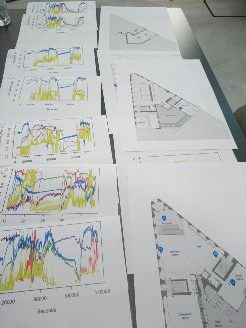



I also sat with software engineer Thomas Van Bouwel and his team. He used Unity 3D to design a virtual workspace model and cross-office collaboration. He combined C Sharp with Unity 3 software program to add functionality to his 3D model. He created a virtual workspace model, which is demonstrated on the screen, but he also noticed the ceiling in the photograph. It is not suspended, and the ducts and lights are seen openly.
For me, the most significant issue is the hybridization of the computer meta-medium of evolution – hybridization is in! It is different from the digital and techno-cultural revolution that London saw. I realized this was made possible by AEC Hackathon founder Damon Hernandez who welcomed AEC Hackathon London and its partners. The ability to stimulate not one or two but most media in a computer combined with computer abilities to control real-time challenges, calculate transform input tests, and send information over networks opens endless possibilities for creativity. I say hybrid because the engineers were interacting, mutilating, and making hybrids within the common ecology of space. Subsequently, I questioned the technological ecology of this event as it was more prominent in perspective because of the venue itself, Urban Innovation Centre. Previously, I did not think that “non-smart” passive spaces may have become blurred. The ecology needs to be written about because the relationships with ecology will likely change as consumer-level content access and media developing software change. Alternatively, this is perhaps due to continually evolving software, so some of the categories are above the popularity as the features change. This could be because network architectures can’t function in isolation. Instead, participation in larger ecology by contemporary designers is becoming increasingly necessary for those creating software applications for the users of interactive media applications and services. New techniques are constantly developed, which changes the identity of a particular medium in a specific piece of software.
July 28, 2016



I interviewed Damon Hernandez on why architecture, engineering, and construction were created.




An introduction to Virtual Reality Oculus rift VR Headset censors and control gear was available to audiences who enjoyed the 360`experience.
In Britain, the Gear VR phone allows the recording of 3D images for the construction industry. It is used for designing and surveying the surrounding areas. Costain builders in Britain train civil and environmental system engineers as apprentices to do the role. It is estimated that over 80% of female engineers were happy with their jobs. The tideway tunnel project is training students in engineering, design, and construction.
Motor technology is used for engineering and also teaching and is programmed. The robots can teach in any language and have IP addresses. There are 600,000 products available for schools and colleges in Britain. The London Festival of Design and Engineering exhibition featured some of the products. The robots have special features such as voice recognition, facial recognition, and color recognition, to mention a few. The robots can also be controlled by an individual. They are manufactured by a German company.
.
